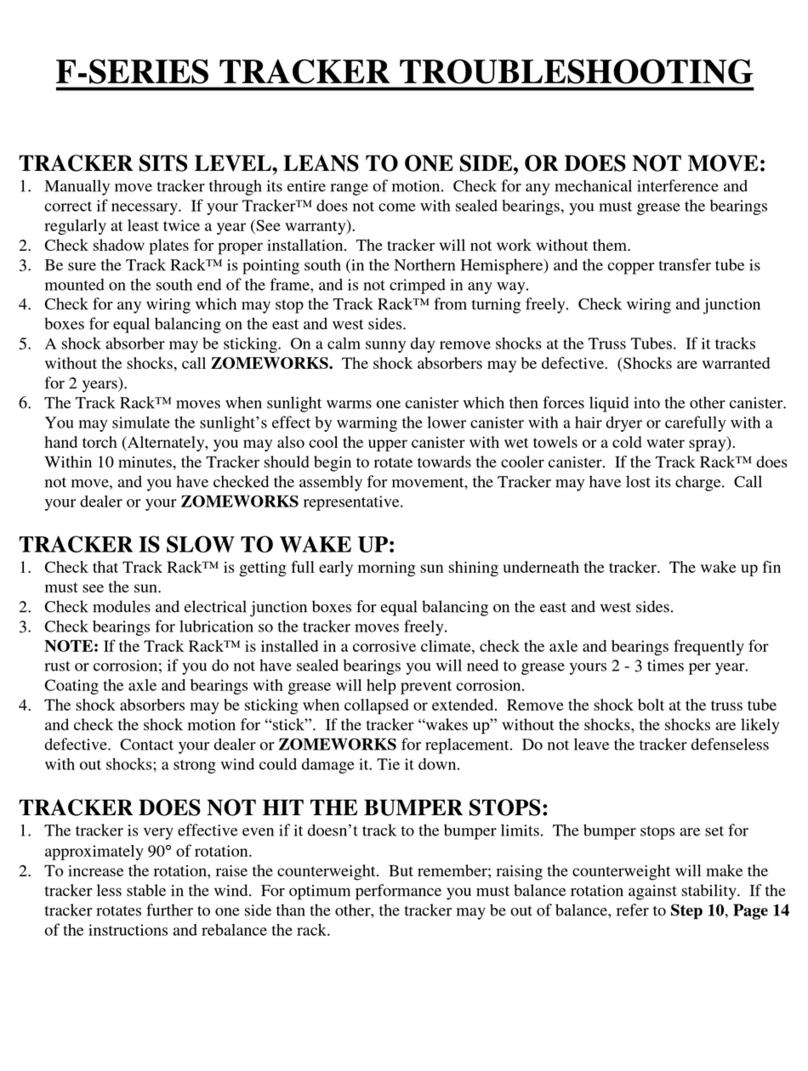
North Cross Arm Assembly
•The North Cross Arm Assembly consists of
two Extruded Rail sections joined by the
North Bearing Plate and Counterweight Arm.
•The North Bearing Plate has two welded-
on square nuts for mounting the shock/s.
•Orient the Extruded Rail sections so that the
1/4” slot is on the top.
•Pre-install two of the 3/8” x 1-1/4” round
head bolts in each rail section.
•Pre-install two 5/16” x 3/4” hex bolts in each
rail section.
•Adjust the 3/8” bolts as necessary to align
with holes in North Bearing Plate.
•Cutout for bearing should be closest to the
1/4” slot, the welded nuts should be closest
to the Counterweight Arm.
•Make sure the rail sections are butted
together and close to straight. Install spring
lock washers and nuts and tighten lightly.
•Install the Counterweight Arm in the same
way. Make sure that the arm is close to
centered on the rail sections.
•Install spring lock washers and nuts.
•When the alignment looks good (rails are
butted/centered, and rails make a straight
line), tighten 3/8” nuts to 30 ft-lbs, and 5/16” nuts to 15 ft-lbs.
South Cross Arm Assembly
•The South Bearing Plate does not have weld-on square nuts.
•Assemble similarly to the North Cross Arm.
•Again, make sure the cutout for the bearing is offset closer to the 1/4” slot.
Method #1 or Method #2
At this point there are a couple of ways to proceed:
1) Building the rack from the “pole-up”, one component at a time.
2) Assembling rails, modules, and axle together and lifting on to the pole.
Method 1 eliminates the step of lifting the completed sub-assembly (up to 200 lbs) on to the
pole, but also makes installing / aligning the modules more difficult on the rails.




























